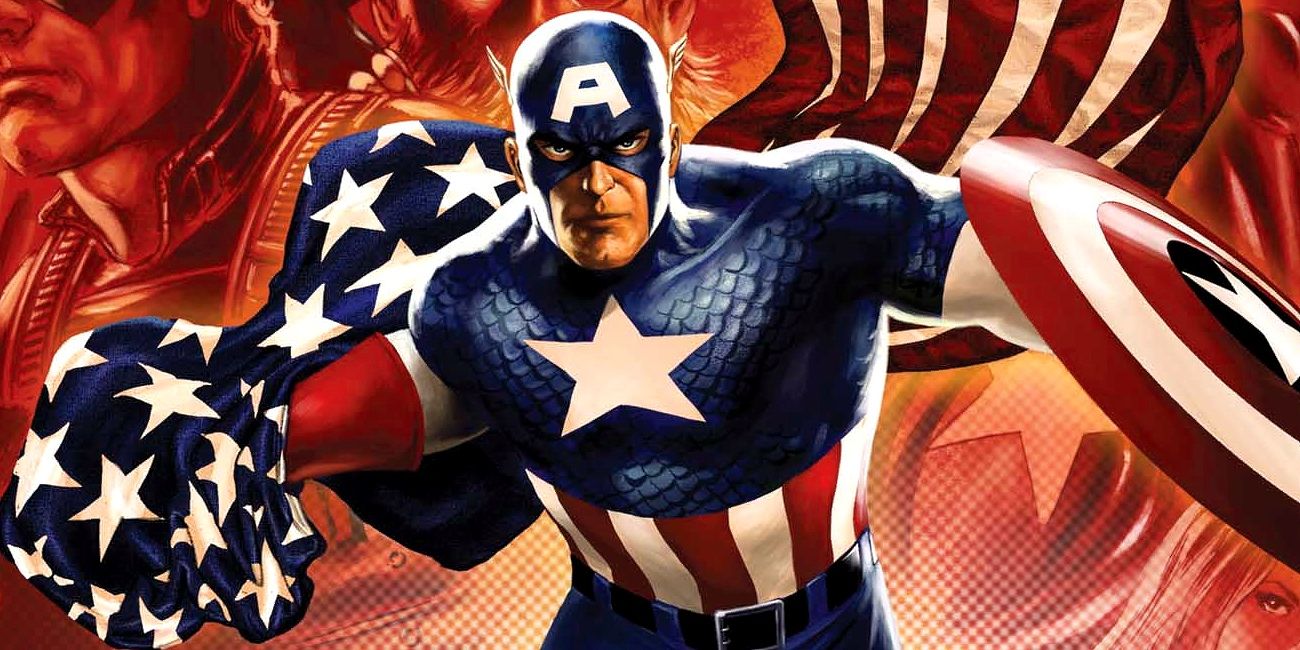
That story is part of Captain America’s Bicentennial Battles, a giant issue written and drawn entirely by Jack Kirby that takes Cap on a journey through time to learn what America is all about. Apropos of nothing, an unfortunately characterized “Mister Buda”, is Captain America’s Virgil, guiding him through time via a series of vignettes. This will apparently connect the hero with the people he’s supposed to represent. It’s not really clear why Buda is doing this, other than being a sorcerer, but it’s very important to him to show Steve Rogers what he’s fighting for. So, he sends Captain America to the American Revolution.
Why every Revolutionary War time travel scene has to have a sequence with Benjamin Franklin is beyond understanding, but without fail, as soon as Cap arrives in 1776 he runs into the man who invented bifocals. The 1970s style, classic stars and stripes, primary colors, costume caused a bit of a stir in the 1770s, so Franklin invites Cap into his home for a conversation about his origins. That’s when a woman named Betsy Ross (there for reasons unknown), is inspired by Captain America’s costume. She even decides to incorporate those elements into the flag for the fledgling nation they’re fighting for. Like any experienced superhero, Cap immediately panics about creating a time paradox, but Mister Buda instantly teleports him away, to another time, and another place. But not before he can deliver what is easily one of the greatest lines ever uttered by a superhero:

Throughout this “King-Size” issue, the boy in blue visits with Native Americans, swings through the Great Depression, reunites briefly with his old partner Bucky, and even rescues a runaway slave, all in the service of understanding what the country is built on. There are touching moments, like when Captain America is able to protect a helpless paper boy from thieving mobsters. But there’s also a flash to the future where Cap sees humans are even fighting on the moon.. confirming violence will never stop. Ultimately the issue sums up its Bicentennial message with a nod to the future, that all of those stories are where the United States came from, but the future is wide open, and looking brighter all the time.
Despite the trope-y mystical tour guide, a story like this is a great tool for character development. What better way is there to prove a hero than to throw them into different situations through time to find out how they reconcile it all? It’s one thing to say they stand for something, but with a heroic concept like “America”, stories that grapple with what that means are important. That’s how a hero gains legitimacy in representing the people they protect. If this is starting to sound political, maybe that’s not the worst thing, either. Maybe for the tricentennial, a Captain America election, complete with endless political campaigns?
from ScreenRant - Feed https://ift.tt/3bNQf18

![The X-Men's [SPOILER] Just Gave Their Life For Cyclops](https://4.bp.blogspot.com/-O3EpVMWcoKw/WxY6-6I4--I/AAAAAAAAB2s/KzC0FqUQtkMdw7VzT6oOR_8vbZO6EJc-ACK4BGAYYCw/w680/nth.png)

0 Comments